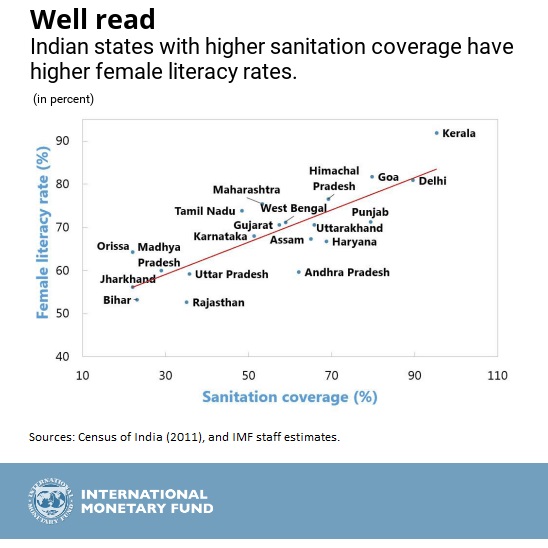Improving access to sanitation, an important Sustainable Development Goal, is essential for achieving gender equality and economic prosperity. It leads to increased female participation in the workforce, higher literacy and faster economic growth, according to the IMF’s latest research on India.
Specifically, improving public sanitation in India reduces time spent by women involved in household and childcare work by close to 10 percent and increases labor force participation, or the proportion of women in the workforce, by 1.5 percent. It also contributes to a 1.4 percent increase in real GDP. Comparing data across the country shows that better sanitation also leads to higher female literacy rates.
Since its launch in 2014, the country’s Swachh Bharat (Clean India) initiative, resulted in a 13 percent increase in the number of households with access to toilets. But India has a long way to go: 53 percent of households still lack a toilet. According to IMF research, poor sanitation not only affects the quality and quantity of water, but it can also have detrimental effects on health, education, quality of life, and women and girls’ safety.
To maintain its rapid pace of economic growth, India must continue to improve access to sanitation facilities through infrastructure investments, targeted in rural areas, such as access to clean water. Policymakers should also encourage the use of existing sanitation facilities and build awareness of their health benefits.
Read more on India’s economy:
- Interview with Paul Cashin, IMF mission chief for India, on the country’s outlook
- 2017 Staff Report and Selected Issues paper.







